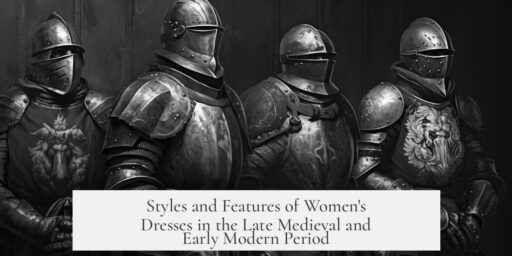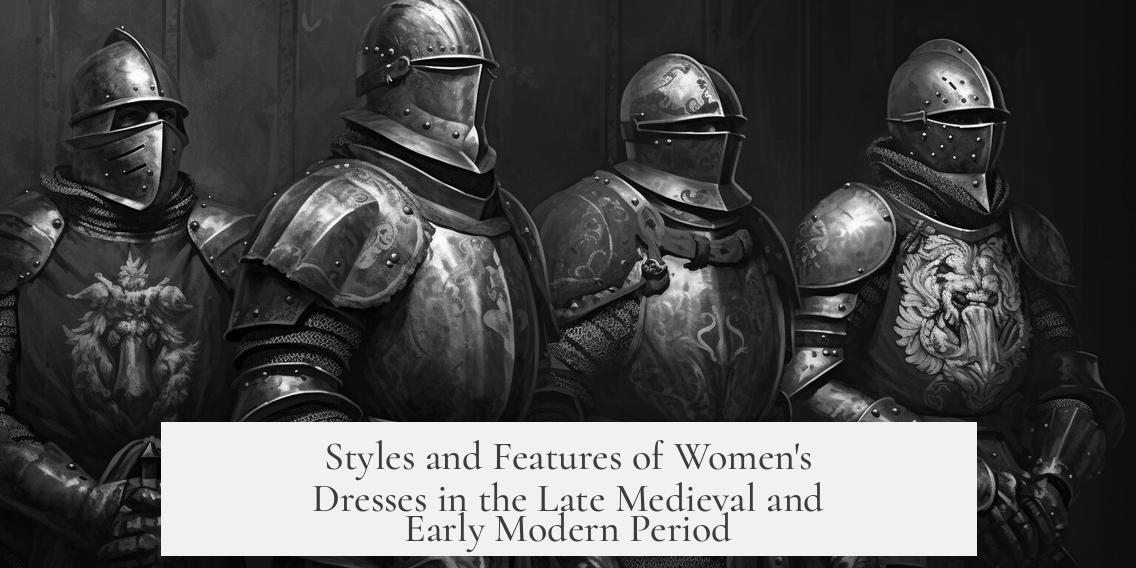Women in the late medieval and early modern period wore dresses that varied notably by region, social status, and evolving fashion trends across Europe. The overall style reflected both practicality and appearance, changing gradually from the modest coverage common in the medieval era toward the more revealing fashions that emerged in the Renaissance courts.
Dress styles differed considerably across Europe. Noblewomen in the Holy Roman Empire dressed distinctively from those in England or Italy. Regional customs, climate, and available materials influenced styles before fashions centralized around the French court in the eighteenth century.
In England during the early sixteenth century, women’s dress involved multiple layers. The base garment was a linen smock or chemise, worn next to the skin to provide comfort and hygiene. Over this, they wore an undergown with a bodice stiffened by materials such as gummed fabric or reeds. Finally, a richly decorated overgown completed the outfit.
Necklines in this period typically featured a square shape but remained modest, often covering most of the chest up to the throat. Modesty prevailed due to social conventions and moral expectations. For much of the medieval period, exposing areas below the collarbone attracted criticism. This conservatism began to shift slowly during the early modern era.
Portraits like the one by Michel Sittow display layering of necklines: a smock rising slightly above the undergown and overgown necklines. Gradually, especially under Henry VIII’s reign, gowns’ necklines became lower and broader, revealing more of the upper chest. Still, many women covered their shoulders and décolleté with opaque partlets or worn high-collared smocks for additional modesty and sun protection.
The sun exposure factor shaped fashion choices across Europe. Pale skin was a sign of high social class since outdoor laborers developed tans. Without sunscreen, the upper classes used clothing layers to shield skin from the sun. This distinction influenced daytime wear and contributed to differing styles for day and evening occasions.
Medieval necklines evolved over centuries. During the Early and High Medieval periods, necklines sat relatively high yet often showed the collarbones. In the 14th century, necklines widened but still stayed relatively high, requiring mantles, hoods, or veils for external protection and modesty. By the 15th century, court fashion allowed lower necklines, sometimes even revealing cleavage.
Outerwear such as the houppelande—a loose, warm garment with a high collar—covered the décolleté areas. Variants of the houppelande appeared, including the Burgundian gown in mid-15th century France, which sported a deep V-neck exposing a low-cut gown beneath.
The French court witnessed some of the most daring fashions. Agnés Sorel, the official mistress of King Charles VII, popularized very low-cut dresses during the 15th century. Her style raised moral criticism due to the exposure of breasts or cleavage, causing scandal despite possibly exaggerated reports. Her influence remained limited to courtly circles.
| Period | Region | Typical Dress Elements | Neckline Style |
|---|---|---|---|
| Early 16th Century | England | Linen smock, stiffened undergown, overgown | Square, moderately high |
| 14th Century | Europe wide | High necklines, wide collars, mantles and veils outdoors | Widened but high |
| 15th Century | France and Burgundy | Houppelande, Burgundian gown with deep V-neck | Lower, cleavage visible in court styles |
Visual media adaptations sometimes misrepresent these fashions. For example, the TV series The Tudors features necklines occasionally deeper than those typical in the early 16th century, reflecting later styles rather than historical accuracy.
Fashion changes reflected social structures, modesty norms, and practical needs like sun protection. Layers were common, combining foundation garments with outer gowns. Necklines descended from conservative medieval heights toward more revealing Renaissance styles, yet daywear often preserved modesty using high collars or partlets. Court fashions introduced daring trends, but these were exceptions rather than norms.
- Late medieval and early modern dresses varied greatly by region and social rank across Europe.
- English women in the early 1500s wore layered garments: smocks, stiffened undergowns, and overgowns.
- Necklines started high and square, lowering gradually through the 15th and 16th centuries.
- Sun protection influenced clothing design, with pale skin highly prized among the upper class.
- Courtly fashions (e.g., Burgundian gowns, Agnés Sorel’s style) pushed fashion boundaries.
- Outer garments like the houppelande offered warmth and coverage, with evolving collar styles.
- Historical portraits provide accurate views, contrasting with some modern media depictions.
What Kind of Dresses Would Women Have Worn in the Late Medieval/Early Modern Period?
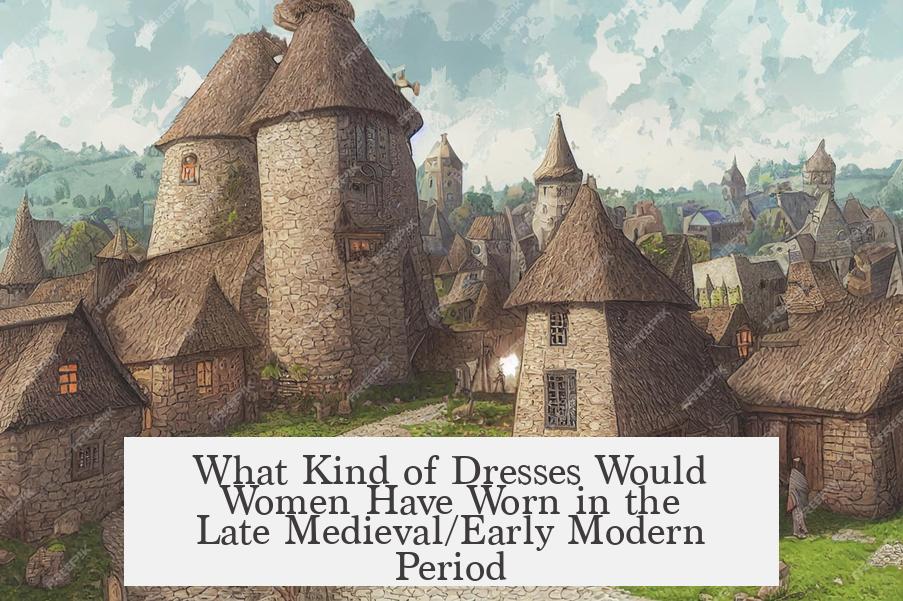
Simply put, women in the late medieval and early modern period wore layered, modest dresses whose styles varied greatly across Europe, shaped by geography, social status, and evolving cultural norms. Let’s unravel this sartorial story, threading through regions, necklines, sun protection, and the occasional royal scandal.
Curious what kept a noblewoman of the early sixteenth century both cozy and courtly? Or how an Englishwoman’s dress differed from her Venetian or Burgundian counterpart? This post traces those fashion footprints across time and place.
Styles Are Regional—Fashion Wasn’t One-Size-Fits-All
You might picture late medieval or early modern European ladies all dressed like the French nobility—rich fabrics, elegant silhouettes shimmering under candlelight. Well, fashion back then wasn’t exactly globalized TikTok trends. Fashion diversity reigned supreme. While French nobility would eventually become style trendsetters, that didn’t happen overnight. From Dublin’s misty streets to the sun-dappled Venetian canals, women’s dresses reflected local climate, traditions, and culture.
For example, a noblewoman in the Holy Roman Empire sported garments distinct from those in London or Venice. So, imagining a “typical” dress risks missing the colorful tapestry of European dress traditions during this time.
English Women’s Fashion in the Early Sixteenth Century: Layers Are the Key
Let’s home in on early 1500s England. If you’re picturing lacy, flimsy fabrics—think again. The base layer was the linen smock, akin to a chemise—a lightweight, often white garment worn next to the skin. On top of that lay the undergown, whose bodice was stiffened with materials like heavily gummed fabric or osier reeds woven into channels.
Yes, imagine reeds stuffed into fabric—an early corset-like effort to sculpt the body. Over that came the overgown, a more visible and decorative layer. Interestingly, separate under-bust foundation garments weren’t common yet. Instead, they integrated support into the layers themselves.
The fashionable neckline back then was square and modestly high. Unlike modern plunging necklines, early sixteenth-century looks didn’t expose much below the collarbones. Modesty mattered. Moralists often preached against any chest exposure; this social pressure kept necklines conservative.
Looking at the Sittow portrait, we see how the neckline of the gown sat just the right height, subtly revealing the layered smock beneath, which peeked over by about an inch. Later in Henry VIII’s reign, necklines crept lower, moving toward a more revealing, wider shape, signaling slow shifts in societal norms.
But neckline height and width was only part of the coverage game. Women often wore opaque partlets—small capelets or collars covering chests and shoulders. Some smocks even boasted standing collars for added modesty and warmth.
The Sun, Pale Skin, and Dressing for Class
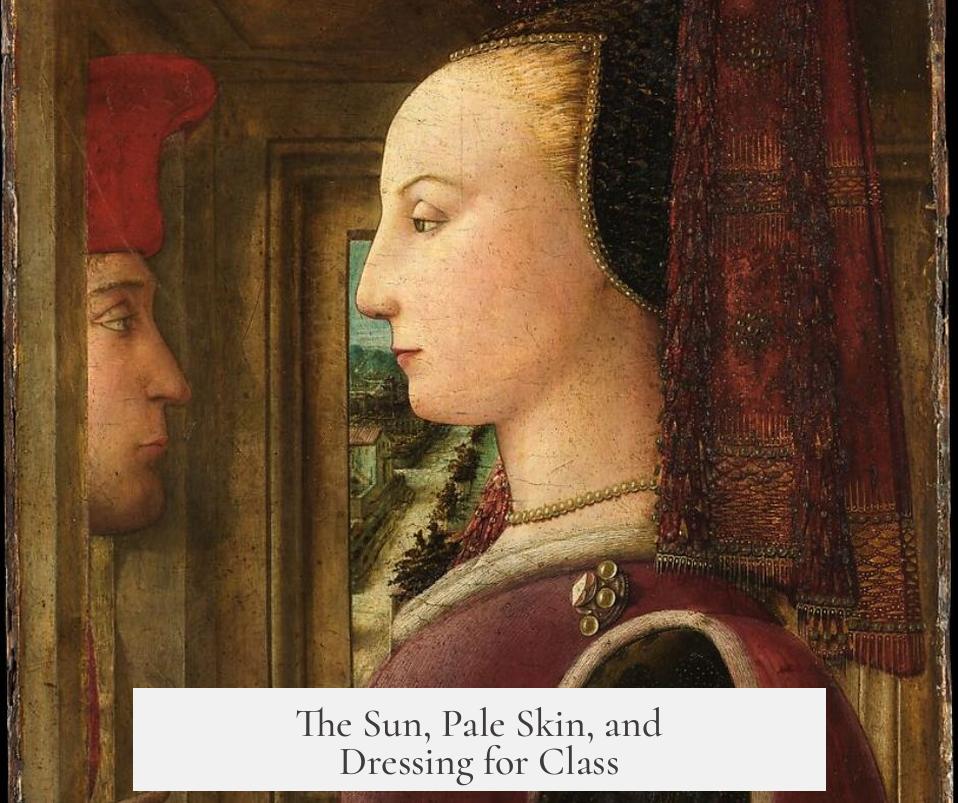
Before we dive into interrupted necklines and court scandals, let’s talk sun. No sunscreen existed to shield delicate skin. People naturally avoided burning or tanning.
Interestingly, pale skin symbolized wealth and class. Outdoors workers tanned from sunlight, signaling lower social status. The upper classes used clothing to physically block sun exposure and maintain that desired pale complexion.
This classical preference had a huge impact on clothing choices, especially the difference between day and evening wear. Long sleeves, high collars, and veils weren’t just fashion—they were aristocratic armor against the sun.
Necklines: The Slow Dance Toward Exposure
Medieval necklines lived in a state of slow evolution. Early and high medieval women favored fairly high necklines, modestly revealing collarbones. But by the 14th century, societal shifts nudged necklines wider and slightly lower.
Even so, outdoor fashion included mantles, hoods, and veils to shield necklines from sun and cold, preserving modesty and health.
Come the 15th century, necklines dropped further—some courtly fashions boldly revealed cleavage. To balance this, new accessories emerged solely for covering the décolleté, addressing the public modesty caught between fashion and social acceptance.
The houppelande, a warm and loose outer gown, became chic. Worn over the tight-fitting kirtle, it sported a high collar that offered modesty and warmth, illustrating the blend of practicality and courtly elegance.
Burgundian Gowns and the Royal Influence on Style
France’s Burgundy court, a fashion powerhouse of the 15th century, pushed boundary-pushing gowns with deep V-shaped necklines. These premiered layered looks, revealing the low-cut gown underneath.
Then there was Agnés Sorel, the notorious first mistress of King Charles VII. She popularized an extreme low-cut style that scandalized moralists for showing considerable cleavage—some said even exposing breasts, though that is debated. Whether exaggeration or reality, this fashion ruffled feathers and largely stayed confined to court events.
Imagine being the talk of the palace for your daring neckline! It was a bold statement, but didn’t become widely adopted, partly due to ongoing conservative attitudes and the risk of social backlash.
Inaccuracies & Modern Misinterpretations in Media
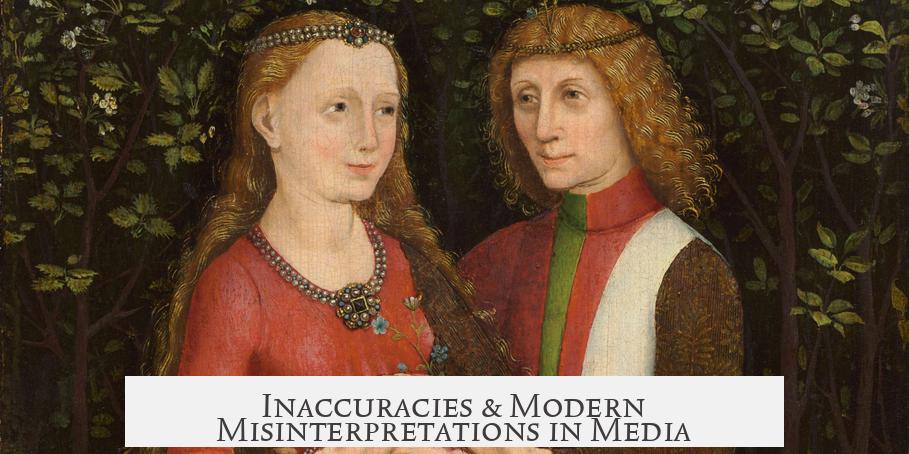
Modern portrayals sometimes confuse actual historical styles. The TV series The Tudors, for example, features gowns with necklines deeper than those typical for the early 16th century. At times, these depictions more closely resemble eighteenth-century fashion than the modest, layered reality of Tudor ladies.
This reminds us to approach historical costume in media with a grain of salt. It’s fun to watch, but the truth is more nuanced and less glamorous.
Why Does This Matter Today?
Examining these dresses connects us to the daily lives of women long ago. Choosing and layering garments was never just about style; it was about identity, survival, and social signals.
Understanding the modest necklines, layered fabrics, and sun-protective habits enriches our view of history beyond knights and castles. It reveals the quiet battles over status, gender expectations, and even health.
Want to try medieval fashion? Start with layering your clothes—you might be more historically stylish than you think!
Summary Table: Dress Features Across Regions and Time
| Region/Period | Main Dress Characteristics | Neckline Style | Special Notes |
|---|---|---|---|
| Early 16th Century England | Linen smock, stiff bodiced undergown, overgown | Square, modest; necklines deepened late in century | Opaque partlets, layered for modesty and warmth |
| 14th Century Europe | Widened necklines, maintaining modest coverage | Higher than later eras, shoulders often covered outdoors | Mantles, veils, and hoods used as outdoor wear |
| 15th Century Burgundy | Houppelande with high collars; Burgundian deep V-neck gowns | Lower necklines with exposed décolleté | Agnés Sorel’s scandalous low-cut court style |
Curious To Know More?
Next time you see a medieval or Renaissance fair, pause and consider the layers beneath the flowing gowns. They’re histories worn—stories sewn in fabric and reeds.
So, what’s your take? Would you dare rock a Burgundian deep V-neck in today’s world? Or does the stiff corseted bodice seem a step too far? Fashion history is as much about personal choice as it is cultural signals. Your thoughts, costume ideas, or questions? Drop them below!
What layers made up an English woman’s dress in the early 16th century?
She wore a linen smock next to the skin, followed by a stiffened undergown, and then an overgown. The bodice of the undergown was often stiffened with materials like gummed fabric or reeds to give a structured shape.
How did necklines change from the late medieval to early modern period?
Necklines began fairly high and square in the medieval era, showing little cleavage. By the 15th century, necklines widened and lowered at court, sometimes revealing cleavage, especially with garments like the Burgundian gown and styles favored by figures like Agnés Sorel.
Why did women in this period cover their skin extensively?
Sun exposure was avoided to keep skin pale, a sign of high social status. Without sunscreen, clothing like partlets, mantles, and veils protected them from sun and cold. This affected the design of day and evening wear significantly.
What regional differences existed in late medieval/early modern women’s fashion?
Styles varied widely across Europe. Nobles in the Holy Roman Empire dressed differently than those in England or Venice. The French court influenced fashion, but it did not dominate all regions until much later.
How accurate are the deep necklines shown in media like The Tudors TV series for the early 1500s?
The Tudors sometimes show necklines that are deeper than historically accurate for the early 16th century, resembling styles from the 18th century more than those typical of Henry VIII’s time.
